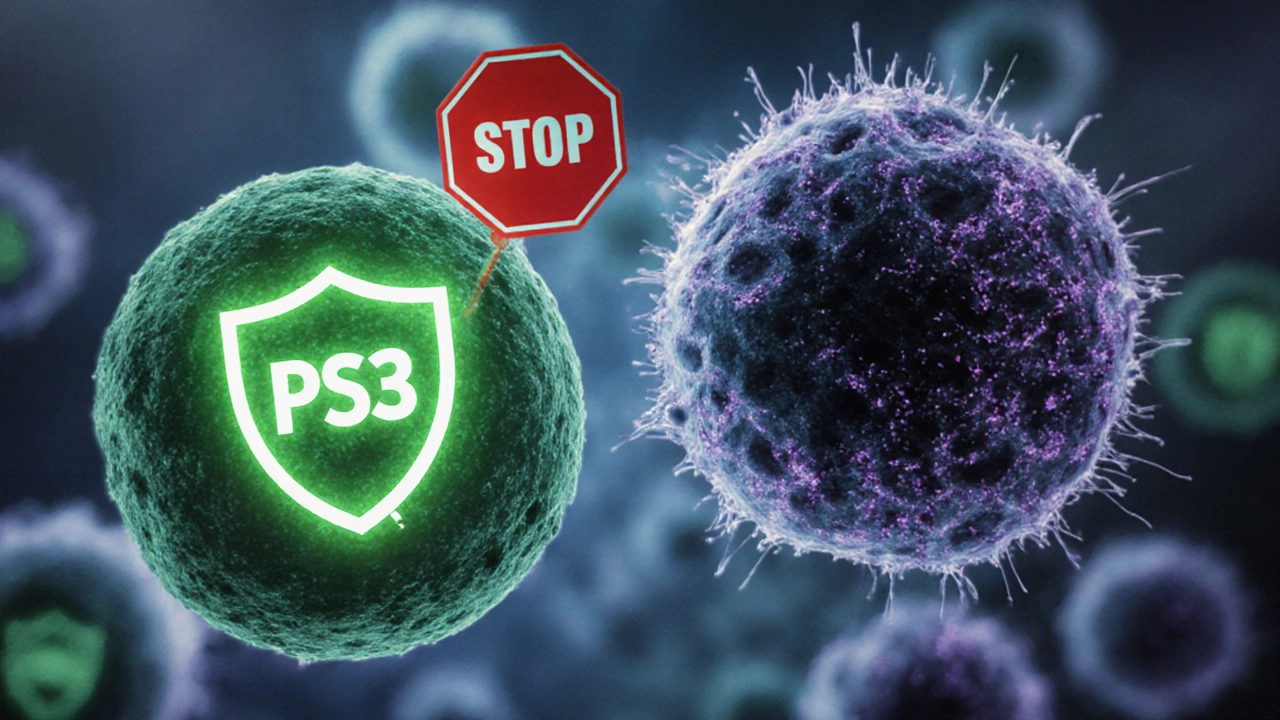Tumor Suppressor: Understanding the Body’s Cancer Guard
When you hear tumor suppressor, a gene that helps control cell growth and stops cells from turning cancerous. Also known as cancer‑preventing gene, it plays a crucial role in keeping tissues healthy. Think of it as a security guard for your cells – it checks IDs, stops troublemakers, and calls in backup when something looks off. If the guard slips, the doors open for uncontrolled growth, which can lead to tumors.
One of the biggest ways tumor suppressors show up in real life is through cancer treatment, medical approaches that aim to eliminate or control cancer cells. Modern therapies often aim to reactivate or replace faulty tumor suppressors, because restoring that security line can shrink tumors or keep them from spreading. For example, certain targeted drugs are designed to boost the activity of the p53 gene, one of the most famous tumor suppressors.
Why Tumor Suppressor Genes Matter
At the cellular level, tumor suppressors are tied to DNA repair, the set of processes that fix damage to genetic material. When DNA gets hurt, repair crews patch it up. Tumor suppressor proteins often act as supervisors, deciding whether a cell can safely continue dividing or must pause for repairs. If the supervisor is missing, the cell may keep copying errors, increasing cancer risk.
Another key link is the cell cycle, the series of steps a cell goes through to grow and divide. Tumor suppressors like RB and p21 act like traffic lights, turning green for growth only when conditions are right. A broken light leads to chaotic traffic, which in biology means unchecked cell division.
Genetic testing is the practical side of this science. By screening for mutations in tumor suppressor genes, doctors can spot people who are genetically predisposed to cancers such as breast, colon, or ovarian. Early detection lets families take preventive steps – more frequent screenings, lifestyle tweaks, or even prophylactic surgeries. In short, tumor suppressor information turns a hidden risk into an actionable plan.
Beyond the lab, everyday habits can influence how well tumor suppressors do their job. Regular exercise, balanced nutrition, and limiting exposure to carcinogens (like tobacco smoke) help keep DNA damage low, which lessens the burden on these genes. Stress management also matters because chronic inflammation can strain repair systems, indirectly taxing tumor suppressor pathways.
Putting it all together, we see a web of connections: tumor suppressor genes regulate the cell cycle, rely on DNA repair, guide cancer treatment choices, and can be monitored through genetic testing. This web shows why understanding tumor suppressors matters for anyone thinking about health, especially if a family history of cancer exists. Below you’ll find articles that dive deeper into related topics – from the latest cancer treatment advances to practical tips for staying ahead of genetic risks. Explore the collection to see how each piece fits into the bigger picture of protecting your health.





